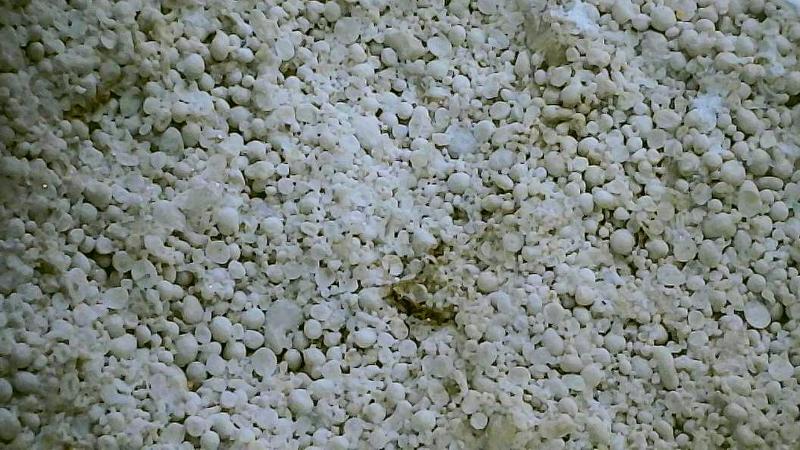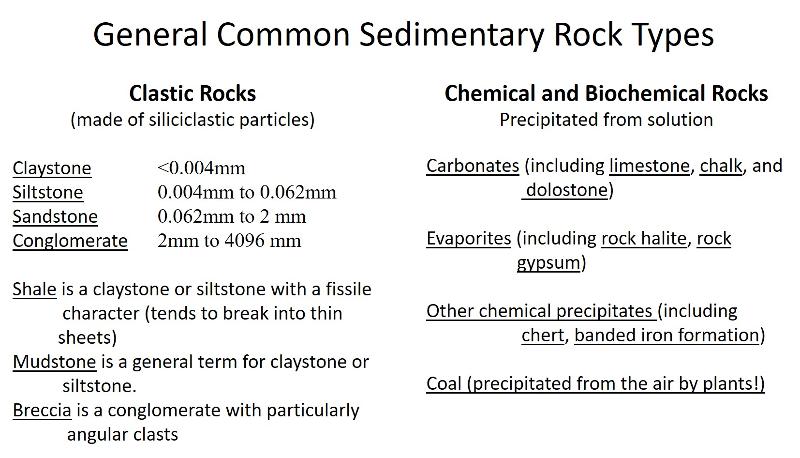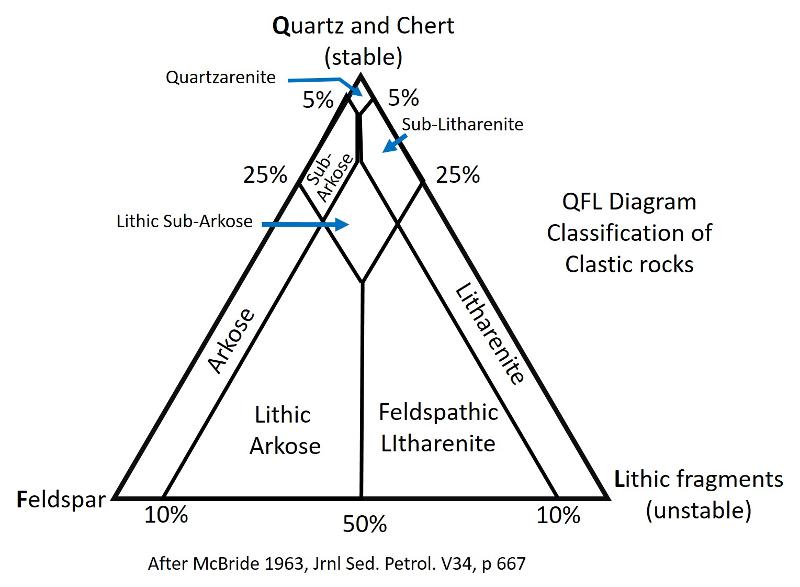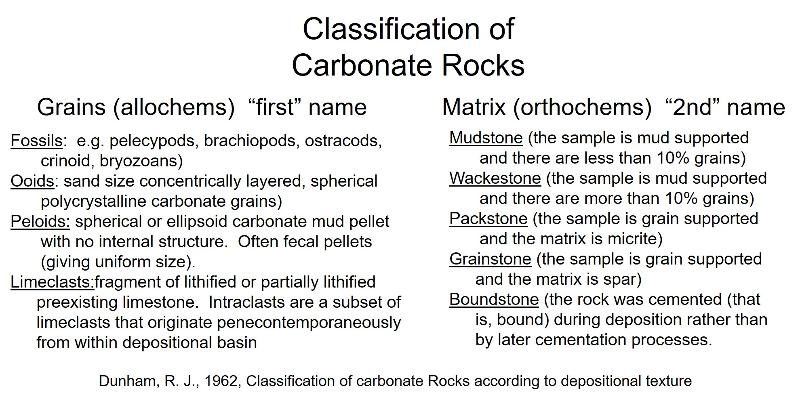
Earth Science Extras
by Russ Colson

An oolitic limestone--it tells a story of ocean chemistry and wave action in Earth's ancient past!
This exercise is intended to provide you with practice and insight into
The emphasis is not on detailed and complicated interpretations of each rock, something that often requires more information from regional context, microscopic study, chemical analysis, mineralogical analysis, stratigraphic relationships, and so on than you can get from a hand sample (or the pictures in this lesson), but rather on identifying the basic stories told by the textures and minerals of the rock. For sedimentary rocks, this mostly relates to
and to a lesser extenct
In simple summary, the particle size of detrital rocks tells us a lot about the energy of the environment of deposition. HIgh energy (big waves on a shore, fast water in a stream) will wash away small particles and so sediments deposited in those environments will have coarse particles (generally larger than sand sized). Low energy environments (standing water, gently moving water) will allow finer particles to accumulate (generally smaller than sand sized). The maturity of a sediment (indicated by grain angularity, sediment sorting, chemical and physical stablity of the minerals present) can signal either the amount of weathering in the environment of deposition (such as the ongoing wave motion that continues to weather particles along a beach) or the distance that the sediment travels before it reaches its environment of deposition. Very immature sediments have generally been transported only a short distance and then rapidly deposited and buried by subsequent sediments.
Environments of deposition for chemical and biochemical rocks are more varied in nature, but typically 'make sense' in terms of our experience in the modern world. For example, coal indicates high plant production such as at a swamp or bog, evaporite deposits indicate arid conditions and a water body that does not get refreshed by connection to a larger body, and carbonates often indicate abundant life to precipitate carbonates from sea water combined with an absence of siliciclastic material (mud, sand, gravel) from nearby land masses. We will use some of these simplifications in this lesson even though there are many complexities to rocks in real life.
In these exercises, you can often figure out the 'answer' through context and simple clues, but the hope is that you pay attention to all of the observations and interpretations that are listed in the answers (and feedback) so as to hone your ablity to notice those features and to practice your ability to make interpretations. There are quite a few "options" in the multiple choice answers, which hopefully encourages you to slow down and think about each rock in particular, what its features are and what stories those features tell. This lesson is not intended to be zipped through in an hour.
This lesson does not provide an introduction to sedimentary rocks. It is expected that you already know the basics of rock types and how to recognize textures, minerals, and tell stories from them.
The pictures provided are intended to approximate what you can see in an actual hand sample, where sometimes key features like cleavage, crystal form, etc are not quite visible. Of course, you can rotate a real sample in the light and get more information based on how what you see changes as you turn it, seeing glints off cleavage planes and getting a better sense of its three-dimensional character. However, knowing what to look for can often help you spot important features that are present in a hand sample, and this lesson provides some prompts to help with notcing some of the important features that might provide guidance on what to look for when looking at a real hand sample.
Although naming the rocks is almost an incidental part of this lesson (given less importance than noticing and interpreting features), here are some classification charts to help you get oriented in naming the rocks. You might want to read through these so as to be familiar with the different rock names and how they reflect a rock's composition and texture.
The charts below summarize some of the key classification systems we will use in this lesson.

We typically name clastic or detrital rocks according to particle size, with the name being based on the size of the largest particles present. Clastic refers to particles, Detrital refers to particles that have been transported a meaningful distance, typically from outside the basin of its deposition.


Read each option carefully (yes, this will take time, that's the point). Some answers are very similar with only slight differences. Read and think about the feedback to the environmental interpretations.
Again, read each option carefully (yes, this will take time, that's the point). Some answers are very similar with only slight differences.
last updated 11/13/2022. Text and pictures are the property of Russ Colson, except as noted.